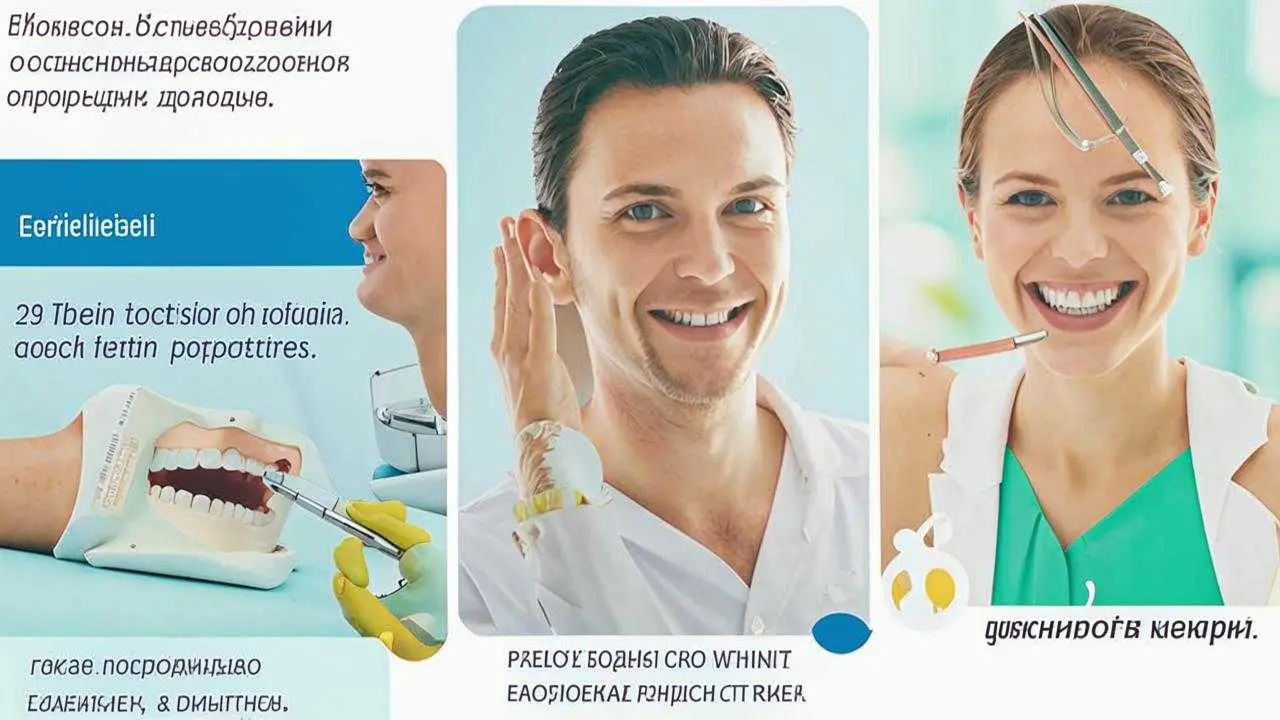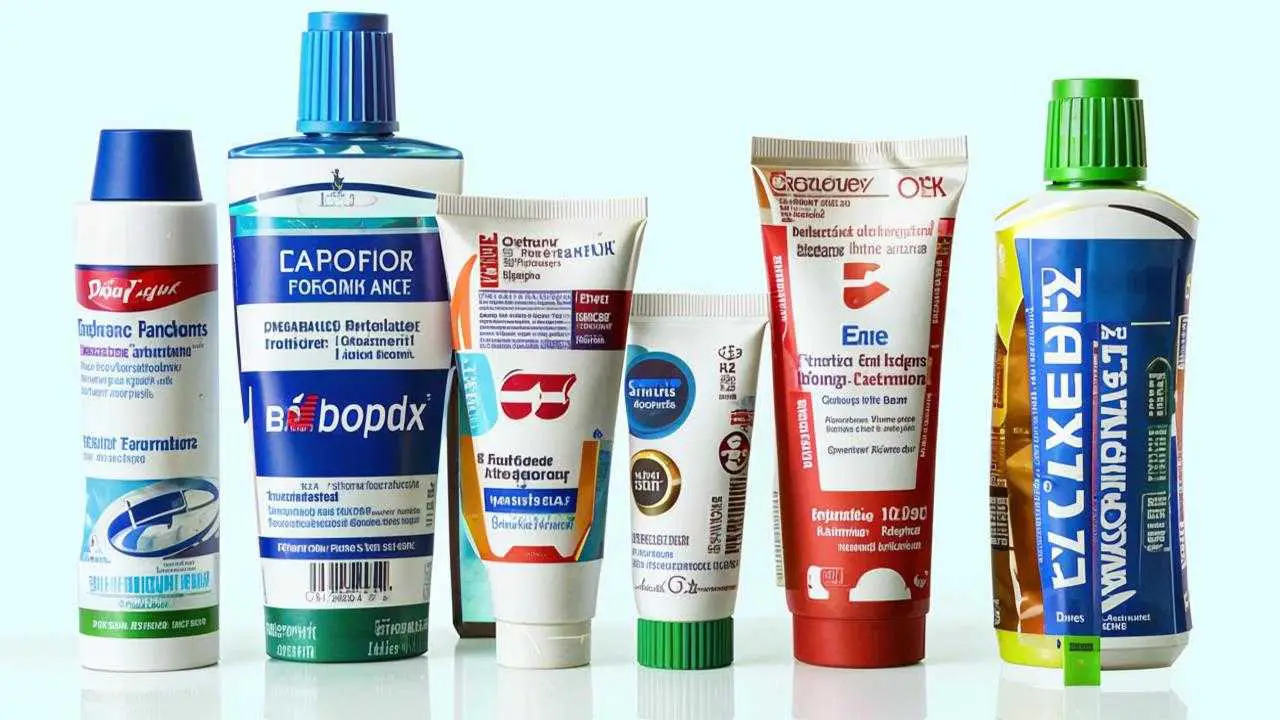فلورة الأسنان بالفلورة طريقة فعالة لحماية الأسنان من التسوس وتقوية بنية المينا باستخدام بعض المنتجات المعالجة بالفلورايد.
يعد الفلورايد عنصرًا مهمًا للجسم، وتبلغ متطلباته اليومية حوالي 3 ملغ. يأتي إلينا مع الماء وبعض الأطعمة. إذا كان غير كافٍ، فإنه يدمر رابطة مركبات الكالسيوم المركزة في المينا، ويصبح السطح ضعيفًا، مما يؤدي إلى زيادة الحساسية وتلف أنسجة الأسنان.
آلية إجراء عملية الفلورة
يتم وضع المنتجات التي تحتوي على الفلورايد على السطح المرئي للأسنان وتدخل في أنسجة المينا، لتعويض نقص العنصر F.
فلورة الأسنان آمنة وغير مؤلمة تماماً. مناسب للبالغين والأطفال من عمر سنتين.
مؤشرات وموانع الاستعمال
مؤشرات لفلورة الأسنان في طب الأسنان:
- زيادة حساسية المينا والتفاعل مع الأطعمة الباردة والساخنة والحامضة والحلوة;
- القابلية للإصابة بمرض التسوس، كوسيلة للوقاية من التسوس;
- بعد استخدام الدعامات وغيرها من تركيبات تقويم العظام;
- نقص الفلورايد;
- بعد تبييض مينا الأسنان
موانع الإجراء، عندما لا يكون هناك سوى ضرر الفلورة:
- الحساسية تجاه المستحضرات المحتوية على الفلورايد;
- الفلورايد الزائد في مياه الشرب;
- التسمم بالفلور (تغير لون الأسنان من التشبع بالفلورايد منذ الطفولة).
أنواع الفلورة
هناك نوعان من الفلورة: الفلورة السطحية والعميقة للأسنان.
فلورة الأسنان البسيطة
هناك ثلاث طرق للطريقة البسيطة المستخدمة في طب الأسنان:
- وضع ورنيش الفلورايد على سطح الأسنان بفرشاة. يتم إنشاء فيلم غير مرئي. يتم تكرار الإجراء عدة مرات. تكلفة الفلورة بالورنيش متاحة للجميع. على الرغم من حقيقة أن العلاج بالفلورولاك قد تم استخدامه لفترة طويلة، إلا أن العلاج لا يزال فعالاً وملائماً.
- الرحلان الكهربائي. يتم تحقيق أفضل نفاذية للأنسجة لجزيئات الفلورايد بواسطة نبضات كهربائية صغيرة. في المرحلة الأولى يتم توصيل أقطاب كهربائية مشبعة بنسبة 10 في المائة من الكالسيوم بالأسنان، وفي المرحلة الثانية يحدث هذا الإجراء مع فلوريد الصوديوم 2-4%. 10 علاجات عادةً ما تكون كافية.
- واقيات الفم الفردية مملوءة بالفلورايد. يتم صنعها بسرعة أثناء زيارة طبيب الأسنان، ويتم أخذ طبعة وتصلب واقي الفم مع شكل أسنان المريض. تكون المادة مرنة. يقوم الطبيب بتعبئة واقيات الفم بمنتج يحتوي على مادة ضوئية. يرتديها المريض لمدة 5-10 دقائق. 10 إجراءات موصى بها.
الفلورة العميقة للمينا وعاج الأسنان
الطريقة البسيطة سطحية، حيث تكون جزيئات الفلورايد كبيرة ولا يمكنها التغلغل بعمق. أما الفلورة العميقة للأسنان فتستخدم محلول سيليكات المغنيسيوم الفلورايد الذي يكون حجم جزيئاته صغيرًا جدًا بحيث يعمل العلاج بشكل أعمق في الأنسجة، مما يثريها بتركيز أعلى من الفلورايد. يخلق الفلورايد والكالسيوم روابط بلورية قوية. في نهاية الإجراء، يتم تغطية الأسنان بمستحضر "مانع للتسرب". تبقى مركبات الفلورايد تحته لمدة عام ونصف.
تتم عملية الفلورة العميقة حتى مرتين في السنةوليس في كثير من الأحيان. تأثير هذه الطريقة قبل البسيط - 5 مرات أعلى.
هل من الضروري فلورة الأسنان بعد التنظيف والتبييض؟
هل من الضروري استخدام الفلورايد بعد التنظيف؟ نعم. تصبح نفاذية المينا أعلى بسبب اللويحة التي تمت إزالتها ويستمر تأثير الختم لفترة أطول على الأسنان. ليس من الضروري استخدام الفلورايد بعد التنظيف والتبييض الاحترافي للأسنان بعد التنظيف والتبييض الاحترافي، ولكن إذا اقترح طبيبك ذلك - لا ترفض، خاصة بعد التبييض. سيجعل المينا أقل حساسية.
هل من الممكن القيام بالفلورة في المنزل
سيكلف سعر فلورة الأسنان في موسكو بطريقة عميقة 2000-3000 روبل (جميع الأسنان)، ولكن يمكنك القيام بذلك بنفسك. تباع مجانا في الصيدليات والمتاجر المتخصصة الاستعدادات للفلورة في المنزل.
- فلورولاك. اتبع التعليمات بدقة، والتي تشير إلى كيفية وعدد مرات وضع طلاء الفلورايد بالفلورايد.
- المعاجين والمواد الهلامية العلاجية والوقائية. في التركيبة يجب أن يكون فلوريد الصوديوم والأمينوفلوريد والفلورايد الأخرى. يجب أن نتذكر ، لا يمكنك استخدام مثل هذا المعجون لفترة طويلة ، بحيث لا يكون هناك وفرة من الفلورايد في الجسم. من الضروري التناوب مع أنواع أخرى.
للحصول على فلورة فعالة، من الأفضل استشارة طبيب الأسنان بشأن اختيار المستحضرات للاستخدام المنزلي. ستكون النتيجة أكثر متانة إذا قمت قبل هذا التنظيف الاحترافي للأسنان بإزالة البلاك والجير.
هل هناك أي ضرر من الفلورة؟
فوائد الفلورايد واضحة - تقوية المينا، والوقاية من التسوس، ولكنه في حد ذاته عنصر خطير. إذا كان مفرطًا في مرحلة الطفولة، فهناك مرض في الأسنان مثل التسمم بالفلور. لا تبدو الأسنان مبهجة من الناحية الجمالية، ولون المينا مختلف، وتظهر البقع.
لا تقم بفلورة الأسنان، إذا كان المريض يعيش في منطقة تحتوي على نسبة عالية من الفلورايد في الماء. واستخدم معاجين الأسنان والجل والغسول بدون فلورايد.
هل يمكن إجراء العملية على الأطفال والنساء الحوامل
أثناء الحمل والرضاعة وعند الأطفال يوصى بالقيام بفلورة المينا وعاج الأسنان. الإجراء الذي يقوم به أخصائي في العيادة آمن تمامًا. سوف ينقذ من التسوس ونقص الكالسيوم ومشاكل أخرى في مثل هذه الفترة الخاصة من الحياة، عندما يكون هناك غالبًا نقص في الفلورايد.
قد يكون من موانع الاستعمال رد فعل تحسسي تجاه المواد المحتوية على الفلورايد.
الاختلافات عن إعادة التمعدن
أي طريقة لفلورة العاج هي جزء من إعادة التمعدن والتشبع الاصطناعي للعناصر الدقيقة والكبيرة في بنية المينا عن طريق وضع معاجين الأسنان والمواد الهلامية الغنية بالكالسيوم والفلور والفوسفور والمغنيسيوم والزنك وما إلى ذلك على السطح. الغرض من الإجراءات هو نفسه - الوقاية من التسوس وتقوية المينا وتجديد العناصر الدقيقة المفقودة أثناء إزالة المعادن. إذا كانت المعاجين والمواد الهلامية لإعادة تمعدن أنسجة الأسنان تحتوي على عدة مكونات، فإن منتجات الفلورة تحتوي على أيونات الفلورايد.
تزيد الفلورة من معدل إعادة التمعدن عدة مرات. بما أن الفلورايد يغلق الأنابيب العاجية، يجب أن يكون استخدام المجمعات المعدنية منفصلاً. إعادة تمعدن الأسنان أولاً وفلورة الأسنان هي الخطوة الأخيرة.
تأثير الفلورة
على الرغم من أن مينا الأسنان يحتوي على كمية فلورايد أقل من الكالسيوم، إلا أنه ببساطة ضروري لقوة المينا. عند معالجة العاج بالفلورايد، يتحد الفلورايد مع جزيئات الأنسجة لتكوين هيدروكسيد الفلوراباتيت، وهو أكثر مقاومة للأحماض. تدمر الأحماض (الطعام الحمضي ومنتجات البكتيريا في لوحة الأسنان) أنسجة الأسنان، ويحدث نزع المعادن وغسل العناصر الدقيقة والكبيرة التي تلعب دورًا مهمًا. فلورة العاج في الوقت المناسب تمنع هذه العملية.
بعد العملية:
- يصبح المينا أقوى;
- يظهر اللمعان الطبيعي;
- تقليل التعرض للتسوس إلى أدنى حد ممكن;
- يتم امتصاص الكالسيوم والفوسفور بشكل أفضل والاحتفاظ بهما في أنسجة الأسنان;
- يتم تقليل حساسية المينا.
الرعاية بعد العلاج
للحفاظ على طبقة رقيقة من الفلورايد بعد الإجراء، والسماح لها بإشباع أنسجة المينا وإتاحة الوقت للمساعدة في تكوين روابط بلورية قوية، من الضروري
- لعدة ساعات بعد فلورة الأسنان لا تأكل أو تشرب الأشياء الساخنة والباردة لعدة ساعات بعد الفلورة
- لا تأكل أطعمة صلبة أو حمضية في اليوم الأول.
إن فلورة الأسنان هي وسيلة فعالة تم اختبارها عبر الزمن للحفاظ على صحة الأسنان، سواء الدائمة أو اللبنية.


